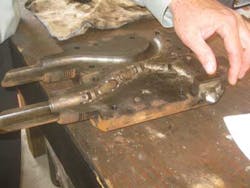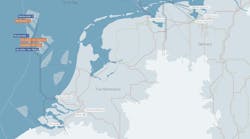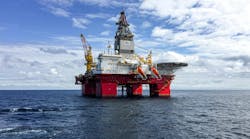The proliferation of unconventional plays has vaulted hydraulic fracturing into prominence as the ultimate way to establish communication between the wellbore and tight or unconventional reservoirs. Although the industry has been performing hydraulic fracture stimulation for half a century, the mainstream media acts like fracturing is something new.
For some time, industry experts have made it clear that hydraulic fracturing appears to be the only viable way to turn unconventional plays into economic successes. However, an innovative technique may have opened an alternative for certain specific cases. Given that it is not the fracturing itself that is critical to success, but rather the resulting communication between the reservoir and the wellbore, the new technique may deliver sufficient reservoir-to-well communication to eliminate fracture treatments and save considerable expense.
When fracturing was first introduced to complete wells in unconventional plays such as shale gas or tight oil or gas reservoirs, the conventional wisdom was to produce a few, widely spaced fractures with very long half-lengths to deliver the commercial flow rates necessary to ensure economic success. Subsequently, it was discovered that several closely spaced fractures of short to moderate half-lengths produced more hydrocarbons because they significantly increased recovery factors in the vicinity of the wellbore. Technology was quickly developed to enable multi-stage fracturing to exploit this idea, and today's development plans include this feature.
But hydraulic fracturing has always had inherent risk. Because it is very difficult to control the propagation of a fracture with any degree of precision, it is hard to treat zones with nearby geohazards, such as aquifers. If the fracture intersects the geohazard, a good gas well may turn out to be a bad salt-water well. Typically, hydraulic fractures propagate as vertically oriented planes or fracture wings, whose height and half-length is a function of regional stress patterns. Accordingly, it is common for fractures to propagate up or down to intersect nearby geohazards.
Nevertheless, hydraulic fracturing is the only practical way to access shale reservoirs. Permeability is so low that extensive reservoir contact must be attained to provide commercial volumes of hydrocarbon. But with a moribund gas market, characterized by low demand and low commodity prices, many operators are only drilling shale gas wells when it is necessary to hold a lease. Many are switching their attention to the oil side, and for those folks there may be some good news.
Clipping the wings
By introducing a different way to communicate with the reservoir, Radial Drilling Services Inc. has constructed more than 6,000 laterals in more than 1,000 wells using its patented lateral jetting system. Typically, four 100-m (328-ft) laterals can be jetted at any preselected horizon in a vertical or highly deviated wellbore without upward or downward propagation, thus avoiding any nearby geohazards. Deployed on coiled tubing, the oriented jet heads pierce the rock to increase reservoir access by several orders of magnitude. Completed laterals can be used to enhance production by extending reservoir contact or to improve injection of water, steam, or CO2 for EOR projects. No conventional perforating or sliding sleeves are required. The number of levels to be treated on a single job is unlimited. In carbonates, acid can be used as jetting fluid to enhance penetration and generate wormholes that increase reservoir contact. The technique has been implemented worldwide in both oil and gas/condensate wells. No proppant is deployed because the jetted hole resembles a perforation tunnel and is mechanically stable.
Jet heads incorporate erosional jets that actually cut the rock, and accelerating jets that push the head forward while circulating cuttings back to the main wellbore. In many cases, the technology promises to enable operators to construct communication paths between boreholes and the surrounding reservoir without resorting to hydraulic fracturing.
A drilling shoe containing a J-slot is run to depth on tubing. Depth control can be assured by initially running a correlation log with a casing collar locator. Additionally, a cement bond log is recommended to ensure there is cement coverage at the spot to be treated. Presently, the minimum casing size is 4½-in. A work string of ½-in. to 5⁄8-in. stainless tubing is run into the tubing. At the end of the work string is a small mud motor that drives a flexible shaft consisting of several universal joints with a metal bit at the bottom end. The motor is actuated by pumping from the surface, and the bit drills a clean hole in the casing and cement sheath about 12 in. (30 cm) long.
The drilling assembly is then pulled out of the hole and replaced by a 330-ft (100-m) Kevlar-reinforced hose with a jet tip at the bottom end. The jetting assembly is cycled into the well to the drilled hole in the casing/cement. Very high-pressure jetting is initiated to cut a hole in the formation. Cuttings are allowed to fall into the rat hole. The drilling shoe is then rotated 90° and the procedure repeated until four orthogonal holes have been constructed.
If desired, the drilling shoe can then be moved up to another level and another set of drain holes can be jetted. There is no limit to the number of stages that can be treated, but stainless tubing reels are presently limited to 12,000 ft (3,660 m) of tubing. Higher-capacity reels can be constructed if necessary. A complete animation of the entire procedure can be viewed atwww.radialdrilling.com.
Offshore Articles Archives
View Oil and Gas Articles on PennEnergy.com







